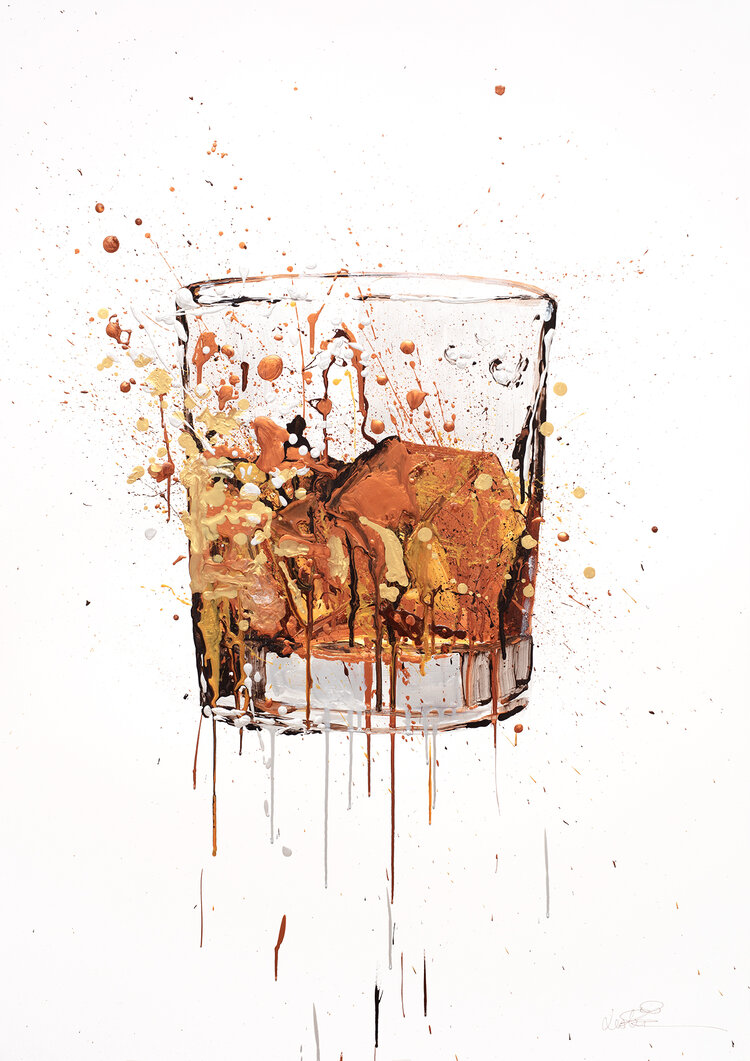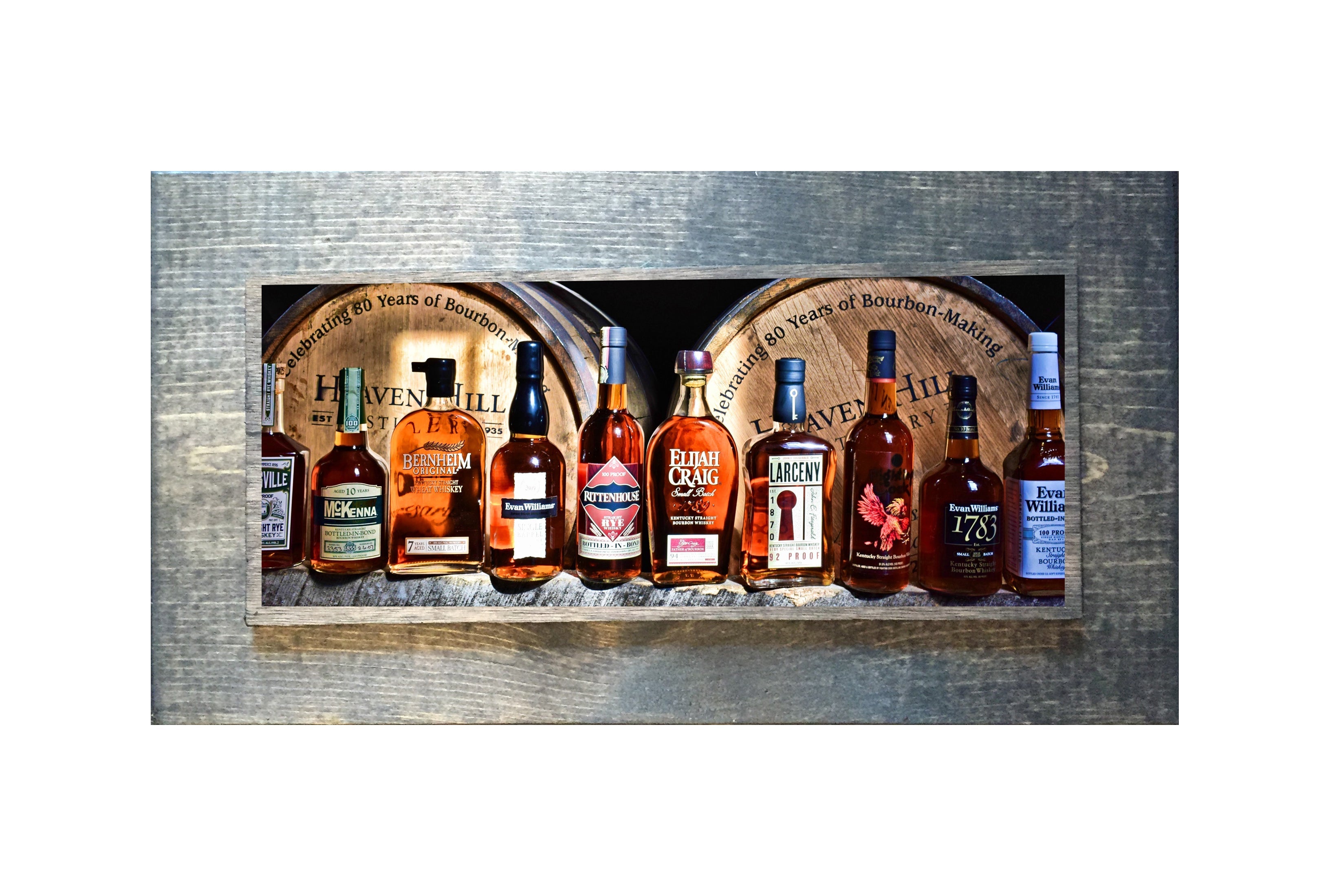Limited Edition Bourbon Art: Why Collectors Are Crowding to Special Finds
Limited Edition Bourbon Art: Why Collectors Are Crowding to Special Finds
Blog Article
Catching the Essence of Scotch Art Through Unique Aesthetic Representations and Designs
The art of scotch extends past the liquid itself, manifesting with a variety of aesthetic depictions that envelop its storied heritage and craftsmanship. What stays to be discovered is exactly how these evolving designs mirror not just the whiskey itself but likewise the altering landscape of artistic analysis. Limited Edition.
The History of Scotch Art

As scotch manufacturing spread, so too did the desire to raise its experience via art. From the elaborate inscriptions on very early barrels to the elaborate labels of modern-day containers, each element reflects an one-of-a-kind imaginative vision, offering as an aesthetic story of the bourbon's heritage.
In the 18th and 19th centuries, the rise of the commercial transformation better boosted whiskey art, bring about cutting-edge packaging and marketing that captured consumer focus. Musicians and developers started trying out aesthetic appeals, imbuing whiskey-related imagery with symbolic meanings that communicated concepts of craftsmanship, community, and custom.
Today, scotch art remains to advance, mixing standard methods with contemporary art kinds. Whiskey Art. This continuous dialogue in between the spirit and its graph highlights the long-lasting bond between scotch and society, improving the general experience for enthusiasts worldwide
Iconic Bottle Layouts
While lots of elements add to the allure of scotch, iconic bottle styles play a pivotal role in shaping customer understanding and enhancing the overall experience. The aesthetic discussion of bourbon containers is not just a visual factor to consider; it acts as a bridge in between the item and the customer, evoking feelings and establishing assumptions.
Distinct shapes, materials, and closures can elevate a bourbon brand name's identification, making it quickly identifiable on congested racks. As an example, the classic Glenfiddich container, with its sophisticated tapered shape, conveys a feeling of tradition and craftsmanship, while the strong, contemporary style of the Balvenie bottle reflects innovation and refinement. Furthermore, making use of colored glass or unique textures can recommend the high quality and character of the whiskey within.
Renowned layouts frequently incorporate components of cultural heritage, signifying the brand's background and link to its origins. Brands like Jack Daniel's utilize an uncomplicated, durable style that resonates with its American whiskey heritage. Eventually, the effect of bottle layout expands past plain capability; it encapsulates the significance of the brand, welcoming consumers to check out and indulge in the rich tapestry of bourbon culture.
Tag Artwork and Branding
Container styles frequently establish the phase wherefore customers can expect, but tag artwork and branding play a similarly considerable function in interacting a scotch's identity. The label offers as the initial point of contact in between the product and the consumer, encapsulating the significance of the scotch within its visual elements.
Effective tag artwork incorporates images, color, and typography to develop a story that reverberates with the brand name's heritage and target audience. A label including intricate pictures and vintage font styles might evoke a sense of practice and workmanship, appealing to connoisseurs. In contrast, more helpful hints bold colors and modern-day design components may bring in a more youthful group seeking development and excitement.


Digital Photography and Visual Narration
Catching the significance of scotch with photography and aesthetic narration is an art kind that raises the brand name experience. This tool transcends simple item representation, delving into the intricate narratives that surround each container. By employing engaging imagery, digital photographers can evoke emotions that resonate with customers, inevitably building a much deeper link to the bourbon brand name.
Visual narration in whiskey digital photography typically uses abundant structures, lighting, and structure to highlight the special characteristics of the spirit. The interplay of light and darkness can accentuate the amber tones of whiskey, while the option of history aspects-- such as rustic barrels or classy glasses-- can enhance the brand's heritage or lifestyle organizations.
Furthermore, capturing the ritualistic elements of bourbon consumption, from the pouring to the tasting, welcomes visitors right into a sensory experience, enabling them to visualize the tastes and aromas that wait for. Each picture not only showcases the product but additionally informs a tale of workmanship, tradition, and the minutes that whiskey can enhance - Realism Art. Thus, photography comes to be an effective tool in expressing the identification of scotch brand names, positioning them within the broader cultural landscape
Emerging Trends in Scotch Art
The development of bourbon art is progressively shaped by contemporary trends that show wider societal shifts and consumer choices. This shift my explanation not only highlights the importance of sustainability yet also improves the story surrounding bourbon production.
Additionally, digital art has actually surged in appeal, allowing for innovative representations of whiskey. Artists are leveraging modern technology to craft immersive experiences, such as increased truth installments that involve customers and offer a deeper understanding of whiskey's cultural relevance. This pattern also encompasses social media platforms, where aesthetically striking web content amasses focus and promotes neighborhood among lovers.
Furthermore, cooperations between bourbon brands and artists are ending up being a lot more prevalent. These partnerships produce limited-edition packaging styles and exclusive artworks that commemorate both the craftsmanship of scotch and the creativity of artists. As bourbon art remains to develop, these emerging patterns will undoubtedly form its future, promoting a dynamic junction of culture, sustainability, and modern technology within the scotch community.
Verdict
To conclude, the art of whiskey includes a diverse selection of graphes that mirror its abundant heritage and workmanship. From famous bottle layouts and elaborate tag artwork to engaging photography, each component adds to a broader narrative that enhances the customer's experience. As arising trends, such as electronic art and sustainability, remain to form this creative landscape, the diverse identity of whiskey continues to be a withstanding resource of cultural link and expedition.

In conclusion, the art of scotch encompasses a diverse range of aesthetic representations that reflect its abundant heritage and craftsmanship.
Report this page